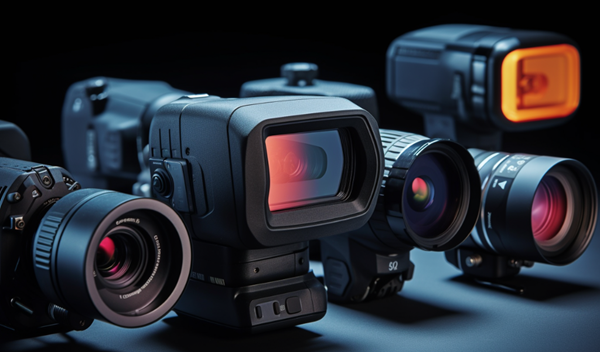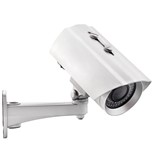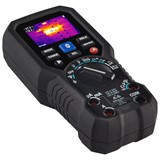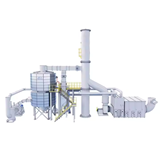Introduction
When it comes to thermal imaging cameras, selecting the right one can be a crucial decision. Whether you're a professional in the field of electrical inspections, building diagnostics, or wildlife observation, having a reliable thermal imaging camera can significantly impact your work. This comprehensive buying guide aims to help you navigate the process of choosing the ideal thermal imaging camera that best suits your specific needs.
Factors to Consider when Buying Thermal Imaging Cameras
Before delving into the details, it's essential to understand the key factors that should influence your purchase decision:
1. Purpose of Use
Define the primary purpose of your thermal imaging camera. Are you planning to use it for industrial inspections, firefighting, research, or outdoor adventures? Different applications may require varying features and specifications.
For industrial inspections, you'll need a camera that can accurately detect hotspots in electrical panels or mechanical equipment. Firefighters may require cameras with high-temperature ranges to locate hidden fires. Researchers may need specialized cameras with precise temperature measurement capabilities. For outdoor enthusiasts, a rugged and portable camera with good image quality will be ideal.
2. Budget Constraints
Set a budget for your thermal imaging camera. Prices can range from a few hundred to several thousand dollars, depending on the model and its capabilities. Knowing your budget will help narrow down your options.
Keep in mind that while budget-friendly options may offer basic functionalities, investing in a higher-priced camera could mean better image resolution, sensitivity, and additional features.
3. Image Resolution and Sensitivity
The image resolution and sensitivity of the camera play a crucial role in determining the level of detail you can capture. Higher resolution and sensitivity are essential for detecting smaller temperature differences.
If you're performing precise inspections, such as detecting water leaks in buildings or identifying overheating components in electronics, a camera with higher resolution (measured in pixels) is recommended. Sensitivity (measured in millikelvins) is equally important for spotting small temperature changes.
4. Thermal Range
Consider the temperature range you'll be working in. Some cameras are better suited for extreme temperatures, while others are designed for more moderate conditions.
For industrial and electrical applications, cameras with a wide temperature range are necessary, as electrical components can get extremely hot during malfunctions. On the other hand, wildlife observers might prefer cameras with a narrower temperature range optimized for environmental conditions.
5. Portability and Durability
If you need to carry your thermal imaging camera to different locations or challenging environments, consider its size, weight, and durability. Rugged cameras are better suited for outdoor use.
Inspectors working in construction sites or remote locations will benefit from compact and robust cameras that can withstand harsh conditions. For those using cameras in controlled environments, a lightweight and ergonomic design may be sufficient.
6. Battery Life
The battery life of the camera is essential, especially for prolonged tasks or remote locations. Look for cameras with long-lasting batteries or the option to swap batteries easily.
Battery life varies depending on the camera's features and usage. If you anticipate extended inspections without access to power sources, investing in a camera with a longer battery life is crucial.
7. Display and User Interface
An intuitive user interface and a high-quality display can enhance your overall experience with the thermal imaging camera.
Inspectors will appreciate cameras with user-friendly interfaces that offer quick access to settings and image analysis tools. High-resolution displays with color options can aid in better understanding thermal data.
8. Integration and Connectivity
Consider how the camera can integrate with your existing equipment or software. Wi-Fi, Bluetooth, and compatibility with smartphones can be advantageous features.
For professionals who require real-time data sharing or seamless integration with existing inspection tools, cameras with built-in connectivity options are invaluable.
9. Brand Reputation
Research the reputation of different brands in the thermal imaging industry. Reliable and established brands often offer better performance and customer support.
Look for customer reviews and feedback on the brand's customer service, product reliability, and longevity. Trusted brands often invest in research and development, leading to superior imaging technology.
10. Warranty and After-Sales Support
A solid warranty and after-sales support can provide peace of mind and protection for your investment.
Consider the duration and coverage of the camera's warranty. Some brands offer extended warranties, while others provide additional support services for technical assistance and repairs.
Determining the Ideal Thermal Imaging Camera Type for Your Needs
There are several types of thermal imaging cameras available, each catering to specific applications:
1. Handheld Thermal Cameras
Handheld thermal cameras are versatile and suitable for various applications. They are lightweight, portable, and easy to use, making them ideal for professionals on the go.
Handheld cameras offer flexibility, allowing users to move freely during inspections. They are common choices for building inspectors, electricians, and HVAC technicians who need to navigate through tight spaces.
2. Fixed-Mount Thermal Cameras
Fixed-mount thermal cameras are designed for continuous monitoring of specific areas, such as in security or industrial settings.
Fixed-mount cameras are installed in fixed positions to monitor critical locations continuously. They are often used in surveillance and security applications to detect intruders or monitor equipment performance.
3. Pan-and-Tilt Thermal Cameras
Pan-and-tilt thermal cameras can be remotely controlled to cover a wide area, making them suitable for surveillance and large-scale inspections.
Pan-and-tilt cameras offer the ability to pan horizontally and tilt vertically, allowing users to adjust the field of view as needed. They are commonly used in security systems and large-scale industrial inspections.
4. Marine Thermal Cameras
Marine thermal cameras are specially designed to withstand harsh maritime conditions and are ideal for boating and maritime applications.
Marine cameras are built with durable materials to resist corrosion and moisture. They are popular among boaters and maritime professionals for navigation, search and rescue, and spotting potential hazards in the water.
Choosing the right thermal imaging camera involves considering various factors such as purpose, budget, resolution, and features. Depending on your specific needs, you may opt for handheld, fixed-mount, pan-and-tilt, or marine thermal cameras. Assess the thermal resolution and sensitivity requirements, and identify key features that are essential for your applications. Comparing leading brands and models will help you make an informed decision, and considering after-sales support and warranty options ensures a satisfactory purchase.
FAQ’s
Q: Can I use a handheld thermal camera for industrial inspections?
A: Yes, handheld thermal cameras are versatile and commonly used in industrial inspections. They offer portability and ease of use, making them suitable for various tasks, including electrical and mechanical inspections.
Q: Are marine thermal cameras suitable for other outdoor activities, like hiking?
A: While marine thermal cameras are designed for maritime use, they can also be used for outdoor activities like hiking, especially in rugged environments. The cameras' durability and ability to withstand harsh conditions make them suitable for various outdoor applications.
Q: What is the ideal temperature range for electrical inspections?
A: The ideal temperature range for electrical inspections typically depends on the specific application, but cameras with a range of -20°C to 250°C (-4°F to 482°F) are often sufficient. This range allows for detecting both normal and abnormal temperature variations in electrical components.
Q: Can I connect my thermal camera to a smartphone for remote monitoring?
A: Yes, many thermal imaging cameras offer connectivity options like Wi-Fi or Bluetooth, allowing you to connect them to smartphones or other devices. With this feature, you can remotely monitor live thermal data and share it with others for collaborative analysis.
Q: Are there any specific regulations regarding the use of thermal imaging cameras in certain industries?
A: Yes, some industries, such as electrical and industrial inspections, may have specific regulations or guidelines for the use of thermal imaging cameras. It's essential to be aware of these regulations and ensure that the camera you choose complies with them for professional use.



-160x160-state_article-rel-cat.png)
















